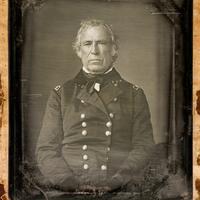More about James Maguire
Works by James Maguire

Sr. Contributor
James Maguire was a portrait photographer, and, before the revelations of the front-facing camera and the selfie stick, this was actually a big deal.
Of course, this was almost two hundred years ago at the dawn of photography itself, when people could scarcely believe that images that were as true-to-life as possible could be captured using a lens and some chemicals. The word “photographer” was barely even used at this time; rather, these early image magicians were known as daguerreotypists because they took daguerreotypes, an early version of the photographic process.
Because of the relative ease of taking a daguerreotype, it was the first art form that was truly accessible to a broad audience. Gone were the days of having to sit for hours to have an artist paint your portrait. Even as daguerreotype studios began popping up in the 1840s, however, these early images were still expensive as the daguerreotypists still had to pay for costly chemicals.
Despite the cost, there was still a large audience for these images, and James Maguire took advantage of the newness of the medium and people’s desires to have their portraits taken. Although originally from Ireland, he struck it big in the United States, where he made a name for himself by opening one of the first daguerreotype studios and galleries in New Orleans, effectively introducing the city to the brand-new art form.
Before New Orleans was known for Mardi Gras and open container laws, it was an important port city, especially during the time of the Mexican-American War. This was an exciting time for Maguire; the war brought important people through the city, many of whom wanted their portraits taken to commemorate this moment in history Zachary Taylor (link to his article) was one of these people. Fresh out of a successful war against Mexico, a triumphant Taylor celebrated by sitting for a daguerreotype, choosing Maguire’s studio to faithfully represent his heroic status.
James Maguire wasn’t the only one to capture a photograph of the famed war hero. Mathew Brady, another nineteenth-century photo magnate, also photographed Zachary Taylor, showing him in a similar uniform. The two portraits illustrate the early differences in approaches to photography. Maguire’s portrait is what we expect to see; it is the image of Taylor who is proud of his successful military campaigns in Mexico. In Brady’s image, however, Taylor seems downtrodden and weary from the battles that he fought. Although Maguire’s portrait seems more dignified, Brady’s portrait is more psychologically complex. Brady reminds us that the title of war hero always comes with a price. I guess that’s why Mathew Brady’s name has withstood the test of time better than Maguire's.
Sources
- Daguerreobase. “What is a daguerreotype?” http://www.daguerreobase.org/en/knowledge-base/what-is-a-daguerreotype. Accessed September 24, 2018.
- Newspapers.com. “The Times-Picayune, 03 Apr 1842, Sun, Page 3.” https://www.newspapers.com/clip/5739564/daguerreotype_james_maguire/. Accessed September 24, 2018.
- Palmquist, Peter E., and Thomas R. Kailbourn. Pioneer Photographers from the Mississippi to the Continental Divide: A Biographical Dictionary, 1839-1865. Stanford: Stanford University Press, 2005.
- Taylor, Alan. “The Gift of the Daguerreotype.” The Atlantic. August 19, 2015. https://www.theatlantic.com/photo/2015/08/the-gift-of-the-daguerreotype…. Accessed September 24, 2018.
- The J. Paul Getty Trust. “J. Paul Getty Museum Presents In Focus: Daguerreotypes.” Press Room. September 23, 2015. http://news.getty.edu/in-focus-daguerrotypes.htm. Accessed September 24, 2018.










